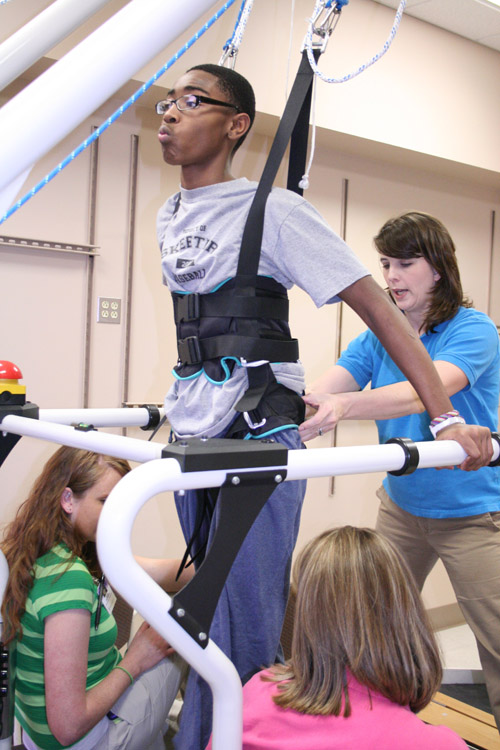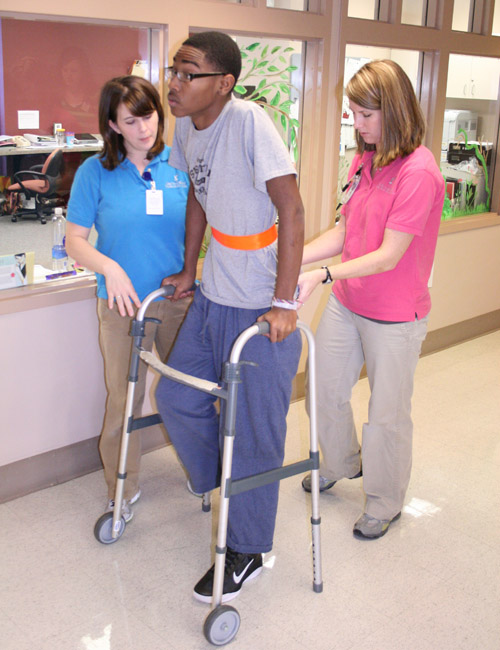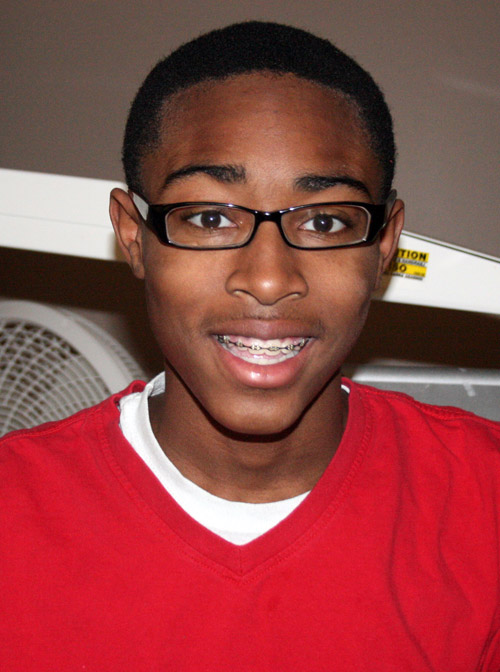Since he came to Methodist Rehabilitation Center, 13-year-old Kendarious Woods has seen speedy recovery from his spinal cord injury by an accidental gunshot wound.
But as is true for any teenager born into the information age where everything is faster than immediate, Woods can be impatient.
“I know I’m getting better,” he said during his recent stay at the Jackson hospital. “But it’s just taking too long! I know it’s only been three weeks, but I wish it could have been two days.”
While most teens like Woods might want everything to move at a lightning pace, his mother Demisha Barnes has a different perspective.
“When he first got here, I was doing everything for him,” she said. “Now, in a split second you can say, ‘Ken, it’s time to go,’ and he’s up in the wheelchair—gone! It’s a big improvement.”
Woods’ youthful exuberance has served him well in his therapy, while his typically short teenage attention span has not, bringing about a whole new set of challenges for his therapists.
“It’s the video game era,” Dr. Sam Grissom, Woods’ doctor and medical director of the Spinal Cord Injury Program at Methodist Rehab, said. “You have to keep them interested and engaged.”
“It is different than treating an adult—adults better understand that they’re here to work,” said Stephanie Lynchard, who served as Woods’ occupational therapist.
Lynchard said she kept Woods engaged and interested by letting him guide his own therapy.
“I said, OK, I want you to come up with a list of the things you want to work on,” she said. “We made a therapy contract.”
Most of what Woods suggested was activities that would help him to go back to school at William M. Colmer Middle School in Pascagoula, where he is an eighth grader. One of his favorites was working in the kitchen, which helped with mastering everyday tasks, like carrying a tray.
“He was making smoothies for everybody,” Lynchard said.
Ann Howard, Woods’ physical therapist, had a similar approach.
“You had to figure out how to motivate him, what helps him,” she said. “He really likes basketball, so we did a lot of activities with that.”
Woods’ also has an interest in science—he says it’s his favorite school subject—and the advanced technology available at Methodist Rehab captured his imagination.
“He really enjoyed working with the weight-supporting treadmill system,” Grissom said.
The weight-supporting treadmill system is a therapy that has helped many patients make significant gains in their walking ability. While the treadmill’s harness, pulleys and pneumatic system support the patient’s weight, therapists can assist the person with a stepping motion.
“He wasn’t able to walk when he first got here,” Howard said. “He’s made progress with the treadmill and of course being able to walk over ground.”
Acts of violence, particularly gunshot wounds, are the second largest contributor to spinal cord injury in the U.S. according to the Foundation for Spinal Cord Injury, Prevention, Care and Cure, but Woods’ physical therapist Ann Howard says it was rare to see a patient of Woods’ age with his particular injury.
“He’s definitely the youngest gunshot patient that I’ve worked with,” Howard said.
Though he mostly uses a wheelchair to get around Woods has achieved walking a short distance with the assistance of a walker, a testament to his recovery.
Woods hopes his walking will continue to improve, but right now he just wants to get back to being a teenager.
“He’s been bored, wanting to be with his friends,” Howard said. “He just wants to be having fun right now… that’s been the biggest challenge in trying to focus him.”
Woods says what he’s most looking forward to after leaving Methodist Rehab is getting back to school and seeing his friends again.
He’s also a big fan of Louisiana State University, where he hopes to go to college one day. For him, that day most likely can’t get here fast enough, but for his mom, things have been moving along just fine.
“I expected him to progress, but not as fast,” Barnes said. “So he has come a long way.”



